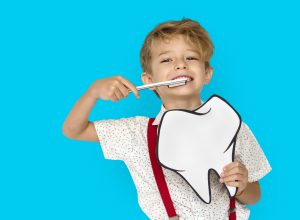It’s a concern that generally takes a back seat when it comes to overall health problems, yet gum disease can have a domino effect on the whole body. 
“Like a puzzle, every piece must fit together [in health] to make a whole,” says Periodontist and Australian Dental Association Spokesperson Dr Fleur Creeper.
Dr Creeper explains how gum disease can occur.
“Bacteria are present on our bodies, in our mouths and our saliva, and if the bacteria are allowed to accumulate on the teeth around the gum line, the bacteria and their by-products – plaque or biofilm – irritate the gum tissues and cause inflammation,” she says.
There are flow-on effects from bacteria build-up, says Dr Erica Tam, a dentist at oral care company Grin.
When gingivitis joins in
Gingivitis is the gateway to gum disease, causing inflammation and irritation.
“The gums may become red and swollen and may bleed when brushed or flossed, or may even bleed during eating or at night,” Dr Creeper says.
“Unfortunately, many people who smoke don’t show any signs at all.
“Smoking affects the blood supply to the gums and also changes the tissue structure of the gums. This has a masking effect, so even when the gums are inflamed, they don’t look red and may not easily bleed.”
She says gingivitis is common and generally dismissed.
The condition affects both children and adults, with data indicating that between 30-70% of adults have the disease.
Severe gum disease is also common. According to Oral Health Tracker in 2020, it was estimated to be the 11th most prevalent disease globally, with recent Australian data indicating that 28.8% of adults have periodontal pockets.
Reversing gingivitis
While periodontitis requires more serious treatment, Dr Creeper reassures that gingivitis is generally reversible.
She adds that thorough cleaning of teeth should help resolve gingivitis within a week to 10 days.
“If there are still some signs of redness or bleeding, it may be best to have a check-up with your dentist,” she says.
“They can examine your teeth, gums and mouth and check the health of the gums.
“They may provide some individualised tips or recommendations for your mouth, or perhaps provide some treatment, such as scale and clean if calculus is detected.”
However, if periodontitis is present, the individual will receive a referral to a periodontist for assessment and management tips.
A pharmacist’s role with oral hygiene
Dr Creeper says pharmacists should be encouraged to discuss the importance of good oral health and the link between oral health and general health conditions, medications, drugs or supplements, “so that oral conditions can be prevented or managed appropriately”.
She concludes that pharmacists can advise customers to follow basic oral hygiene routines at home.
To read the full feature as it appears in the July issue of Retail Pharmacy Assistants e-magazine, visit: rpassistants.com.au/magazines/retail-pharmacy-assistants-july-2021/






